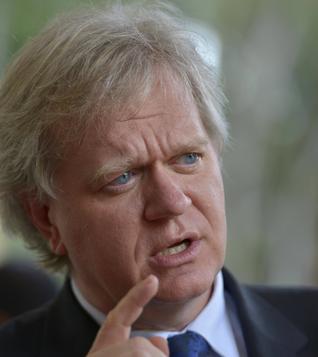 Bangalore, August 24: One of modern science’s great quests, the endeavour to take a peek at the “cosmic dawn” of the universe 13 billion years ago — about 600 million years after the Big Bang — is now closer at hand. The window to “view” the dawn, when the first sources of light in the universe originated in the form of the first stars, quasars and galaxies, has been made possible by a unique radio telescope project, the Murchison Widefield Array (MWA), located deep in the Australian outback, 800 km north of Perth. The project, undertaken by a consortium of research institutions from the host country, the U.S. and the Raman Research Institute (RRI) in India, seeks to answer these and other great puzzles that have baffled humanity for long.
Bangalore, August 24: One of modern science’s great quests, the endeavour to take a peek at the “cosmic dawn” of the universe 13 billion years ago — about 600 million years after the Big Bang — is now closer at hand. The window to “view” the dawn, when the first sources of light in the universe originated in the form of the first stars, quasars and galaxies, has been made possible by a unique radio telescope project, the Murchison Widefield Array (MWA), located deep in the Australian outback, 800 km north of Perth. The project, undertaken by a consortium of research institutions from the host country, the U.S. and the Raman Research Institute (RRI) in India, seeks to answer these and other great puzzles that have baffled humanity for long.
In fact, the MWA is not a single telescope but a network of 2,048 dipole antennas, which are arranged in an array of 128 ‘tiles’ with each tile consisting of 16 antennas. Scaled down from the original plans for a 512-tile array, the project has cost the consortium A$51 million (about Rs. 300 crore). The RRI played a crucial role by designing and developing the digital receivers, the hardware that is critical for the radio telescope.
“The sparsely populated Murchison area is also radio-quiet, which is critical for the project,” says N. Udayashankar, a scientist at the RRI. The area has a population density of less than one person per square km, compared to about 36,000 persons per sq km. in Maharashtra.
Ravi Subrahmanyan, Director, RRI, says the institute was a natural choice for the project because of its “decades-long history in low radio frequency radio astronomy.” The antennas sense [these] electromagnetic fields and are passed on to the digital receivers, which are capable of high-speed sampling of the data as it comes in. “The receivers are basically special-purpose computers,” Prof. Subrahmanyan says. A correlator or a central station, which is located a few kilometres from the telescope, “compares” the data from the 128 tiles to determine the nature and distribution of the radiation in the sky.
Brian Schmidt, who won the Nobel Prize for Physics in 2011, for his contribution to the discovery that the universe is expanding at an accelerating rate, not decelerating as previously thought, told The Hindu that “very few groups in the world have the expertise in the high-speed digital electronics that has been achieved by scientists at the RRI.” Prof. Schmidt, a member of the MWA board, who has guided the project since its inception in 2005, said, “The RRI has filled a hole in the project.”
‘Telescope of future’
“The MWA project is a major step in the evolution of radio astronomy. It is new breed, which enables the harnessing of the power of computers rather than using large dishes as we used to do earlier,” says Prof. Schmidt. “It is the precursor of the telescopes of the future,” he points out.
“Galaxies make up the universe just as bricks make a house,” explains Prof. Subrahmanyan, who did his doctoral thesis under the supervision of Govind Swarup, a pioneer of radio astronomy. “Telescopes such as the MWA can give us clues about the hows and whys of the origin of the universe,” he observes.
Asked if there is much point in undertaking this painstaking work and at a high cost, Prof. Schmidt says: “Ten year olds from all over the world want to understand our place in the universe. Basically, we are trying to figure out how nothing became the world around us as we know it now.” The first reason for seeking a look at the cosmic dawn is that it is such an important part of our humanity,” he adds.
